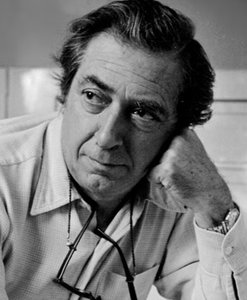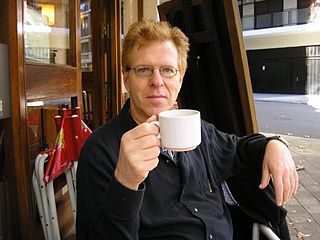
The cornet is a brass instrument similar to the trumpet but distinguished from it by its conical bore, more compact shape, and mellower tone quality. The most common cornet is a transposing instrument in B♭. There is also a soprano cornet in E♭ and cornets in A and C. All are unrelated to the Renaissance and early Baroque cornett.

The euphonium is a medium-sized, 3 or 4-valve, often compensating, conical-bore, tenor-voiced brass instrument that derives its name from the Ancient Greek word εὔφωνος euphōnos, meaning "well-sounding" or "sweet-voiced". The euphonium is a valved instrument. Nearly all current models have piston valves, though some models with rotary valves do exist.

The saxophone is a type of single-reed woodwind instrument with a conical body, usually made of brass. As with all single-reed instruments, sound is produced when a reed on a mouthpiece vibrates to produce a sound wave inside the instrument's body. The pitch is controlled by opening and closing holes in the body to change the effective length of the tube. The holes are closed by leather pads attached to keys operated by the player. Saxophones are made in various sizes and are almost always treated as transposing instruments. A person who plays the saxophone is called a saxophonist or saxist.

The trombone is a musical instrument in the brass family. As with all brass instruments, sound is produced when the player's vibrating lips cause the air column inside the instrument to vibrate. Nearly all trombones use a telescoping slide mechanism to alter the pitch instead of the valves used by other brass instruments. The valve trombone is an exception, using three valves similar to those on a trumpet, and the superbone has valves and a slide.

Musical composition can refer to an original piece or work of music, either vocal or instrumental, the structure of a musical piece or to the process of creating or writing a new piece of music. People who create new compositions are called composers. Composers of primarily songs are usually called songwriters; with songs, the person who writes lyrics for a song is the lyricist. In many cultures, including Western classical music, the act of composing typically includes the creation of music notation, such as a sheet music "score", which is then performed by the composer or by other musicians. In popular music and traditional music, songwriting may involve the creation of a basic outline of the song, called the lead sheet, which sets out the melody, lyrics and chord progression. In classical music, orchestration is typically done by the composer, but in musical theatre and in pop music, songwriters may hire an arranger to do the orchestration. In some cases, a pop or traditional songwriter may not use written notation at all and instead compose the song in their mind and then play, sing or record it from memory. In jazz and popular music, notable sound recordings by influential performers are given the weight that written or printed scores play in classical music.

Henry Fillmore was an American musician, composer, publisher, and bandleader, best known for his many marches and screamers, a few of which he wrote for the Band of the Hour at the University of Miami in Coral Gables, Florida.

M. Witmark & Sons was a leading publisher of sheet music for the United States "Tin Pan Alley" music industry.

A concert band, also called a wind band, wind ensemble, wind symphony, wind orchestra, symphonic band, the symphonic winds, or symphonic wind ensemble, is a performing ensemble consisting of members of the woodwind, brass, and percussion families of instruments, and occasionally including the harp, double bass, or bass guitar. On rare occasions, additional, non-traditional instruments may be added to such ensembles such as piano, synthesizer, or electric guitar.
C. G. Conn Ltd., Conn Instruments or commonly just Conn, is a former American manufacturer of musical instruments incorporated in 1915. It bought the production facilities owned by Charles Gerard Conn, a major figure in early manufacture of brasswinds and saxophones in the USA. Its early business was based primarily on brass instruments, which were manufactured in Elkhart, Indiana. During the 1950s the bulk of its sales revenue shifted to electric organs. In 1969 the company was sold in bankruptcy to the Crowell-Collier-MacMillan publishing company. Conn was divested of its Elkhart production facilities in 1970, leaving remaining production in satellite facilities and contractor sources.
Conn-Selmer, Inc. is an American manufacturer of musical instruments for concert bands, marching bands and orchestras. It is a wholly owned subsidiary of Steinway Musical Instruments and was formed in 2003 by combining the Steinway properties, The Selmer Company and United Musical Instruments.

Norman Dello Joio was an American composer active for over half a century. He won a Pulitzer Prize in 1957.

"The High School Cadets" is a march written in 1890 by John Philip Sousa in honor of the cadet drill team of Washington High School in the District of Columbia. It is in regimental march form (I-AA-BB-CC-DD) and is a popular selection for school concert and marching bands, as well as for professional orchestras and bands. The march has been arranged for a wide variety of instruments and ensembles, and has been frequently recorded, including at least two recorded performances by Sousa's own band. The march's final strains were featured in the 1939 film The Under-Pup.
Scott Boerma is a composer of contemporary classical music, an arranger of music for marching ensembles, and the Director of Bands at Western Michigan University.

Marco Katz serves as an editor for a series that brings together music and literature at Palgrave Macmillan. He plays trombone and arranges and composes music for band, brass quintet and other musical ensembles. The reviewer Adam Gaines, in a review of the Bundee Brothers Bone Band album, wrote that "Katz's compositions are a real highlight of the disc. His trombone writing is expertly idiomatic, and his music is harmonically interesting without being obtuse." Mundo Universitario, a program televised by the University of Valle, featured "Marco Katz, master of literature and a professional musician, who was the last trombonist with the legends Charlie Palmieri and Mon Rivera."

King Musical Instruments is a former musical instrument manufacturing company located in Cleveland, Ohio, that used the trade name King for its instruments. In 1965 the company was acquired by the Seeburg Corporation of Eastlake, Ohio, and the name changed to "King Musical Instruments".
Washington Grays is an American march composed by Claudio S. Grafulla in 1861. It is a mainstay of both the parade and concert band march repertoire.
The York Band Instrument Company was a musical instrument manufacturer in Grand Rapids, Michigan.
Alan Raph was an American bass trombonist, composer, arranger, and conductor who founded and conducted the Danbury Brass Band. He recorded with many well-known musicians including Quincy Jones, Philip Glass, Peter Nero, John Pizzarelli and Bob Brookmeyer for television, movies, and ballet. He was for many years on first call with most New York City recording studios.
George Levi Atwater (1866–1931) was a late 19th-early 20th century American composer and arranger from New Haven, Connecticut, and was a contemporary of ragtime songwriter, C.W. O'Connor. He is best known for his arrangements of Yale fight songs.
Lee Orean Smith was an American composer, arranger, music editor, publisher, music teacher, multi-instrumentalist, and conductor. A diverse composer who began his career writing Tin Pan Alley songs and music for the theatre, he later had a prolific output of published band and orchestral works; both arrangements and original pieces. He published music not only under his own name, but also under numerous pseudonyms, including Calvin Grooms, Maurice Lee, Leon Obrero, José Santos, Leopold Lamont, and François Chevalier. Smith composed music for multiple works staged on Broadway, and was the longtime managing editor of the band and orchestra department in the music publishing firm of Leo Feist. At the time of his death he was an editor for Carl Fischer Music.














